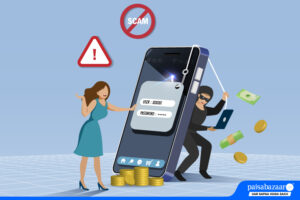To close a personal loan early, you can either opt for pre-closure/foreclosure or make partial prepayments, or transfer it to a different lender at a lower interest cost. Foreclosure refers to when you repay the entire outstanding balance of your personal loan. Partial prepayment refers to when you repay your outstanding loan amount partially. Frequent or significant partial prepayments can help you close your loan early.
To foreclose or partially prepay your personal loan, you’ll need to contact your lender and may need to submit the necessary documents and also pay foreclosure charges or part-prepayment charges, as applicable.
Once you pay the outstanding dues and the loan has been closed, the lender will issue you a payment receipt, No Objection Certificate (NOC), acknowledgement letter and other documents.
What To Do Before Closing a Personal Loan Early
Check for the locking period
Some lenders put a lock-in period on the foreclosure/pre-closure until the borrowers repay a set number of EMIs. For instance, IndusInd Bank and YES Bank allow foreclosure of the personal loan only after the repayment of 12 EMIs.
Limits on Part Prepayment
Some banks/NBFCs set a limit on loan prepayment. For example, HDFC Bank allows its personal loan borrowers to prepay only up to 25% of their principal outstanding, post servicing of 1st EMI. Further, prepayment is allowed once in the financial year and twice during the loan repayment tenure.
Use online prepayment calculators
Use online prepayment calculators to accurately calculate your net savings. Consider prepaying your loan only if there is a significant interest cost savings after taking foreclosure fees (or additional expenses) into consideration.
Know foreclosure/pre-closure charges
Lenders levy prepayment charges on closing a personal loan early. The personal loan foreclosure charges can usually go up to 4% of the outstanding principal amount. Note that lenders are not allowed to levy charges on personal loans availed at floating interest rates.
Decide between investment and foreclosure
Check whether the returns from your investments exceed the interest cost savings made through foreclosure or prepayment. If the returns are higher, the borrower should consider investing when they have surplus funds to foreclose.
Calculate your emergency fund
Your emergency fund should cover a minimum of 6 months of your monthly expenses, such as utility bills, insurance premiums, rent, education fees of your child and loan EMIs. Don’t dip in your emergency fund to foreclose or else in times of financial emergency, you may have to either apply for new loans, probably at higher interest rates, or liquidate long-term investments.
How to Close a Personal Loan Early
- Inform your bank/NBFC of the early closure of your personal loan. The lender may ask you to submit a written request or fill out a form for foreclosure or pre-closure.
- The following documents are usually required for foreclosure, depending on the lender:-
- Personal Loan Account Number: You can get it from your loan statement or via online banking.
- Identity Proof such as Aadhaar card, PAN card, Voter ID Card or passport.
- Loan approval letters, loan statements and other loan-related documents.
- Pay the outstanding dues, including foreclosure charges and GST applicable. You’ll get an acknowledgement or receipt for the outstanding balance paid.
- The lender will also issue a loan closure certificate or a NOC which confirms that there are no outstanding loan amounts.
- Check your credit report after a month of closing a personal loan to ensure that the loan account is marked as closed.
Personal Loan Balance Transfer
You can also transfer your personal loan to another lender at a lower interest rate, for a longer/shorter tenure and for better terms. This would lead to lower interest costs that would help you to repay the loan quickly with the new lender. But make sure to factor in the balance transfer costs, such as loan transfer charges, levied by your current lender and processing fees, stamp duty, etc, charges by your new lender to calculate cost savings on personal loan balance transfer.








